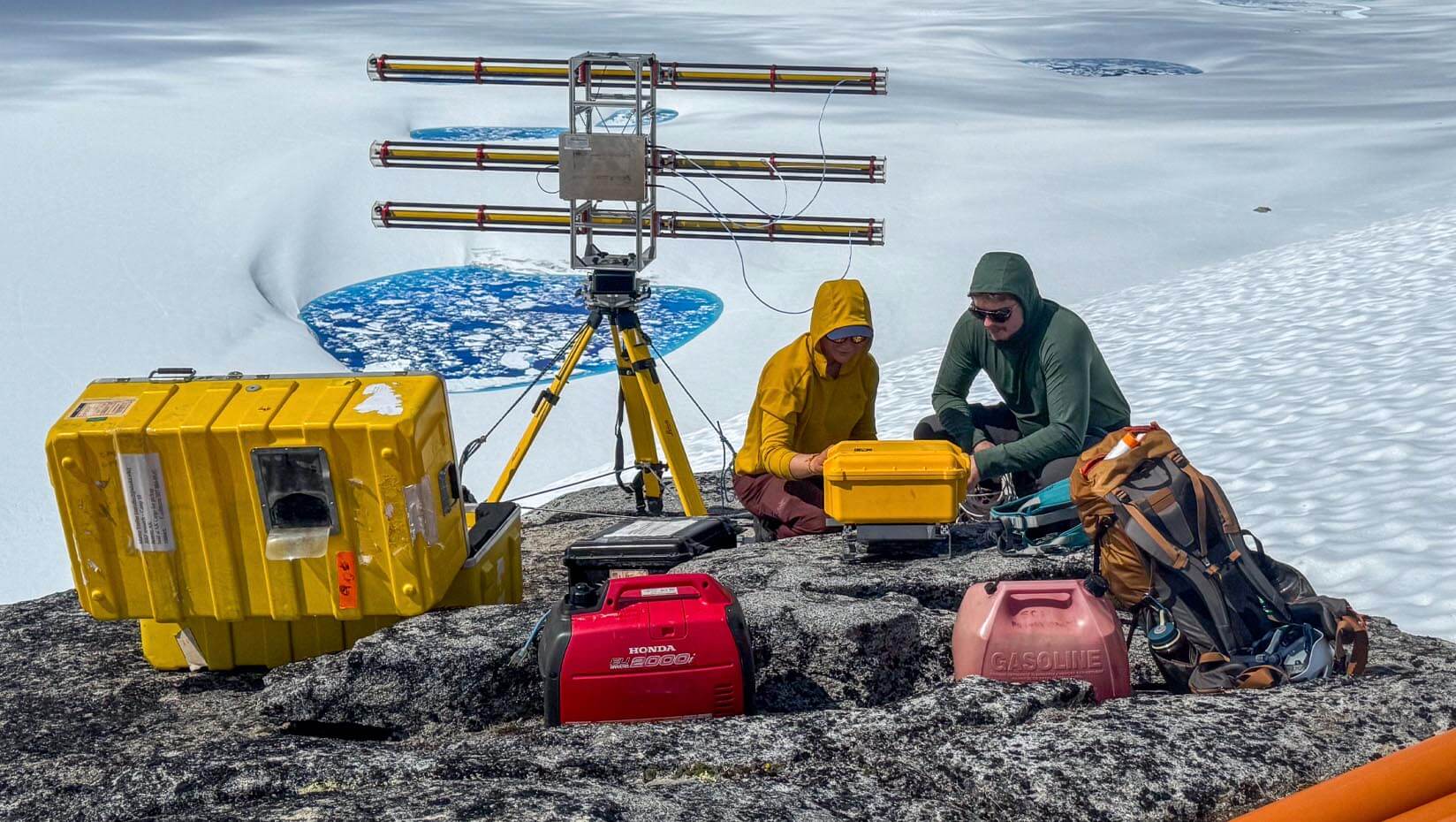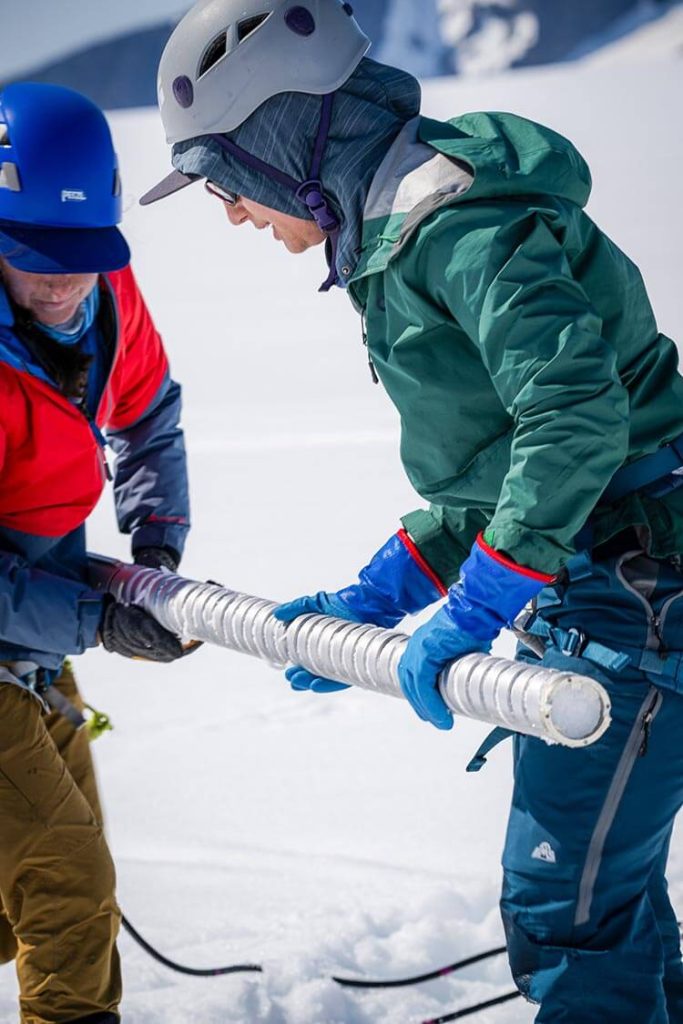
DOD awards $9M for snowpack and meltwater research and Arctic training program in Alaska and New England
The Department of Defense (DOD) has awarded a $9 million contract to the University of Maine for research that will significantly expand efforts to quantify snowpack properties, explore the impact of snowmelt on the surrounding terrestrial environments of Alaska and Maine, and expand training opportunities in polar science.
The project is led by School of Earth and Climate Sciences and Climate Change Institute faculty member Seth Campbell, who will collaborate with more than a dozen other scientists from UMaine and other institutions. The effort builds on a related and existing DOD-funded research project at UMaine spearheaded by professor of earth and climate sciences Chris Gerbi and Campbell. Partner institutions include the University of Alaska Fairbanks, the University of Alaska Southeast, the University of Colorado Boulder, the University of Portland and the Juneau Icefield Research Program.
“The focus of this project is to improve our understanding of water storage and movement in snow through the near surface geology and its impacts on stability of that geology,” said Campbell. “We know that snow holds meltwater and that, through the spring, snow melts and the meltwater can run off or be stored in the near surface geology beneath the snow. What we’re trying to differentiate here is how much water is getting stored, how much is running off and what impact the water has on the underlying terrain.”
Such work is critical, said Campbell, because of differences in the characteristics of wet and dry snowpacks and gaps in understanding of how wet snowpacks inhibit accurate measurement of meltwater.

“As global temperatures warm, we’re expecting to see wet snowpacks more often,” Campbell said. “Understanding wet snow and snow meltwater movement is an important component of research moving forward because it’s likely to have a big impact on water resources. Snow has a porosity, and that pore space can either be filled with water or not filled with water. We can currently be off by roughly 50% of our total estimate of water volume in snowpack using current field or remote sensing methods, depending on the measurement technique. With that uncertainty comes uncertainty about the resulting meltwater — how much of it runs off, how much is stored in the ground and for how long. Little is known about the impacts of that meltwater on ground stability, or how land stability may change with increasing meltwater impacts.”
The project also functions as a polar proving ground and training program that builds on the foundation of the long-running Juneau Icefield Research Program (JIRP), which already brings graduate and undergraduate students, as well as high school juniors and seniors, to the icefield for an eight-week immersive educational and expeditionary experience.
Project study areas include multiple sites in Southeast and Central Alaska, including the Juneau Icefield.
“The Juneau Icefield Research program was established in 1946 and, with the exception of 2020, researchers and students have been there every summer,” said Campbell. “This funding also supports JIRP and allows us to integrate the student participants more fully into the research projects we’re doing. They’ll be able to help us a lot more with the actual science, and, with their help, we’ll be able to get more detailed observations over a longer period of time than you traditionally would with a smaller team.”
The integration of legitimate research into JIRP education initiatives has helped it to become one of the most sought-after polar Earth systems science field training programs in the U.S. JIRP has grown significantly in recent years, and is now co-led by Campbell at UMaine, Brad Markle at University of Colorado Boulder as the director of academics and Annie Boucher as director of operations. Since 2018, more than $16 million in federally funded awards to faculty at UMaine and other scientists across the U.S. have partially supported JIRP-affiliated high school, undergraduate and graduate student and teacher education programs.
In the primary JIRP summer program, students learn to safely live and work on the glaciers, how to conduct field research in polar Earth systems science, and they design and carry out their own research projects under faculty mentorship. The JIRP student program works in parallel with a variety of research teams who use JIRP facilities for their field campaigns. Throughout the summer, JIRP students, with support from educational staff, are implanted with research teams to further their mentorship and training goals.
“One of our goals is to make the icefield more open and inclusive and to turn it into a collaborative research and training program where those of us in the polar science community across the country can work on separate projects or collaborate while also providing student training,” said Campbell. “Because so much of the Juneau Icefield is on U.S. soil, we have an advantage of accessibility and affordability and more than 75 years of institutional knowledge about operating in this environment and the changes that have occurred there over time. We can’t do everything that we could do in Antarctica or Greenland, but there’s a lot we can study in Alaska on the icefield.”
This project will also involve research conducted at several locations across Maine and New Hampshire, and the contract supporting it will cover the purchase of highly specialized equipment for a range of uses. A new airborne LiDAR system will be used on UMaine’s Cessna airplane to map surface elevation and vegetation properties at study sites in New England. The university will also acquire two terrestrial radar interferometry systems that can be used to capture very small changes in land deformation or erosion over short time periods. In addition to its use for this contract, the interferometry and LiDAR equipment will be valuable for other research of importance to the state of Maine over the coming years, including for forestry, agriculture, geoscience and engineering applications.
The award started on July 8 and field research will begin this winter across both Maine and Alaska.
Story by Ashley Forbes
Contact: Marcus Wolf, 207.581.3721; marcus.wolf@maine.edu
